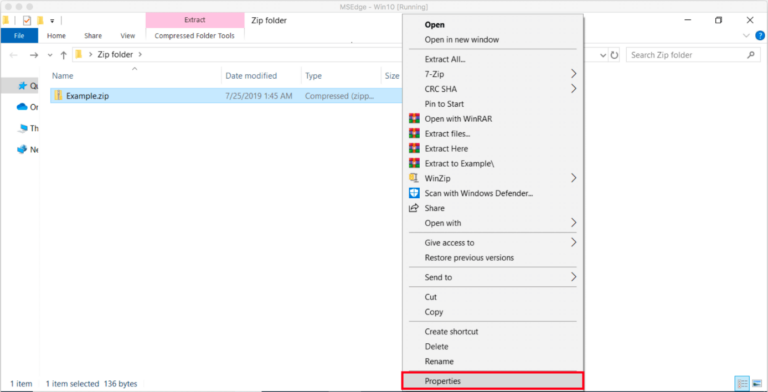
In a crowded marketplace, it’s no longer enough to simply deliver a product or service and call it a day. Clients are judging every interaction with your brand – from the first time they see your content to how you follow up after a purchase.
Each of those moments is a chance to impress, strengthen trust, and stand out from competitors. In 2025, where expectations are higher than ever, it’s the creative and well-executed touchpoints that make a business unforgettable.
Today, we prepared a list of innovative ways to design those moments so they feel personal, strategic, and impossible to ignore.
1. Building Trust Before the First Purchase
The early stages of a client relationship are often the most fragile. They’re also the best chance you have to establish your value, personality, and expertise.
Thought Leadership That Sticks
Becoming a recognizable voice in your industry isn’t about shouting louder – it’s about sharing insights that genuinely help your audience. Thought leadership content builds authority and positions you as someone worth listening to before a client even spends a dollar.
How to Get It Right
- Publish in-depth articles that solve actual client pain points.
- Host webinars or live panels with industry experts.
- Use infographics or short explainer videos to present data in a way that’s easy to remember.
- Share content on LinkedIn to reach decision-makers in your niche.
According to HubSpot, 73% of consumers prefer brands using strong visuals in their content, so pairing expert insight with great design is an easy win.
Social Media That Builds Relationships
Social platforms have become a direct communication line between your brand and your audience. The trick is to treat them as conversation spaces, not billboards.
Practical Tips
- Post consistently so you stay top-of-mind.
- Respond quickly to questions and messages.
- Experiment with polls, quizzes, or quick Q&A sessions to spark interaction.
- Offer exclusive deals or giveaways that reward loyal followers.
Considering that 91% of Americans under 49 shop from their phones (according to Pew Research), ensuring your social posts are mobile-friendly is critical.
2. SEO as a First Impression
A lot of client journeys start with a Google search. If your website isn’t showing up, you’re invisible to people actively looking for what you offer. SEO is about making your site a credible, accessible resource.
Key Moves
- Research search terms that match your audience’s intent.
- Use those terms naturally in page titles, content, and meta descriptions.
- Build backlinks from reputable sites to increase your authority.
- Track your rankings and site traffic with tools like Google Analytics.
Local SEO matters too. A fully optimized Google Business Profile can put you in front of nearby clients and open the door for direct inquiries.
3. Making the Purchase Process Effortless
When someone is ready to buy, the smallest frustration can cause them to drop off. This stage is where attention to detail pays off.
User-Friendly Website Design
Your website is often the deciding factor in whether someone becomes a client. A clean, intuitive design removes friction and keeps visitors moving toward a purchase.
Design Essentials
- Keep navigation clear with logical menus.
- Make sure the site works flawlessly on mobile.
- Use high-quality product images and videos.
- Simplify the checkout process – fewer clicks mean fewer abandoned carts.
With 71% of customers expecting some form of personalization, consider adding tailored product recommendations or dynamic content based on browsing behavior.
Personalized Email Marketing

A well-timed email can seal the deal or bring back a hesitant buyer. Personalization makes those messages feel relevant instead of like background noise.
Amazon’s recommendation emails are a perfect example – they’re specific, data-driven, and often spot-on.
How to Personalize Effectively
- Segment your email list based on user behavior and interests.
- Use dynamic fields to insert relevant products or offers.
- Make the call-to-action clear and easy to act on.
- Test subject lines and send times for better open rates.
Personalized product recommendations have been shown to increase website conversion rates by as much as 49%, as per VWO.
In-Person and Virtual Events
Events create high-impact opportunities to connect with clients in a more personal way. They also allow you to show your expertise in a setting where clients can interact directly.
The INBOUND conference, for instance, brings professionals together to learn, network, and see new solutions in action. Virtual events can offer the same value without travel costs.
To Make Events Work
- Include interactive segments like live Q&A or breakout rooms.
- Promote across multiple channels to boost attendance.
- Follow up with attendees afterward to keep the relationship going.
- Collect feedback to refine your next event.
If you’re hosting a client appreciation event, creating custom printable party invites can make the experience feel even more personal before guests even arrive.
4. Strengthening Loyalty After the Sale

Once the transaction is complete, your work isn’t done. The post-purchase phase is where you can turn a one-time buyer into a lifelong supporter.
Customer Support That Cares
Strong customer service is a loyalty multiplier. Clients remember when their issues are handled quickly and respectfully. Multiple support channels – from live chat to phone – make it easier for them to reach you.
Zendesk’s research highlights the growing role of AI-powered support agents in delivering instant, accurate help around the clock.
Best Practices
- Train teams to listen actively and respond with empathy.
- Implement AI chatbots for quick answers outside of business hours.
- Create a self-service library for common questions.
- Track support metrics to identify areas for improvement.
Businesses with consistently strong support can see loyalty jump by as much as 80%.
Loyalty Programs That Actually Reward
The best loyalty programs feel like insider clubs. Johnny Cupcakes has built hype by offering exclusive product drops for members, which keeps engagement high.
Ideas to Try
- Points-based systems that convert to discounts.
- Tiered perks for higher-spending customers.
- Birthday rewards or anniversary bonuses.
- Challenges or games that unlock special offers.
Done right, these programs create a sense of belonging while encouraging repeat purchases.
Feedback That Feeds Growth
Asking for feedback shows clients you’re serious about improvement. Acting on that feedback closes the loop and proves you value their input.
Platforms like Touchpoints make it simple for organizations to gather and analyze client opinions quickly.
Steps for Success
- Keep surveys short and easy to complete.
- Mix in open-ended questions for deeper insights.
- Share back what you learned and how you’re applying it.
- Offer a small incentive for taking part.
5. Mapping the Full Client Journey
@future.skills.academyCheck all 101’s on lu.ma/101
Looking at individual touchpoints in isolation can lead to missed opportunities. A customer journey map brings all interactions into one view, showing where things flow smoothly and where they break down.
How to Build One
- Create detailed client personas with demographics, goals, and frustrations.
- Outline every stage from awareness to long-term loyalty.
- Identify any friction points using feedback and analytics.
- Adjust your touchpoints to smooth out those rough spots.
- Keep monitoring and tweaking over time.
McKinsey reports that focusing on the complete journey, not just single interactions, can increase satisfaction and retention while lowering service costs.
6. Using Technology to Enhance Touchpoints
Technology isn’t replacing personal interaction – it’s making it easier to deliver it at scale.
Tools Worth Adopting
- AI chatbots for instant responses and tailored recommendations.
- Data analytics platforms to track patterns in client behavior.
- CRM software to centralize all client information.
- Marketing automation to deliver timely, relevant content.
IBM has used analytics to track client behavior across different channels, which allows them to target messages more precisely.
Measuring Success
To know if your touchpoints are actually working, track metrics that connect directly to client satisfaction and business growth.
Key Indicators
Metric
What it Measures
NPS
How likely clients are to recommend you
CSAT
Satisfaction with a specific interaction
Conversion Rate
Percentage of people completing a desired action
Retention Rate
How many clients return over time
Regular analysis lets you refine your approach and put energy into what delivers the biggest returns.
Avoiding Common Pitfalls

Typical Challenges and Fixes
Challenge
Solution
Inconsistent branding
Create and follow a brand style guide
Disconnected teams
Hold regular meetings across departments to align strategies
Overloading clients
Space out communications and keep them relevant
Final Thoughts
In 2025, impressing clients comes down to being intentional at every point of contact. From the first blog post they read to the follow-up email after a purchase, each interaction is a chance to deepen trust and set your brand apart.
Knowing how to tell if online content is reliable helps ensure that every piece you share strengthens your credibility rather than weakens it.
Whether it’s thought leadership that educates, a website that feels effortless to use, or customer service that genuinely listens, the details matter. By mapping the full journey, using smart tech tools, and tracking results, you can keep refining those moments until they work like a well-tuned machine.
The businesses that win will be those that treat touchpoints as more than just marketing tactics – they’ll see them as the building blocks of long-term client relationships.
Relacionados:
- Your Baby’s First Year - Developmental Milestones by Month
- The Best 8 Corporate Gift Ideas for Clients and…
- 21 Creative Bedroom Accessories That Double As…
- Why Your Electricity Bill is Skyrocketing?…
- How to Enjoy Your 30-Minute Work Break Like a Boss?
- Top 8 DIY Renovation Projects That Add Real Value to…











